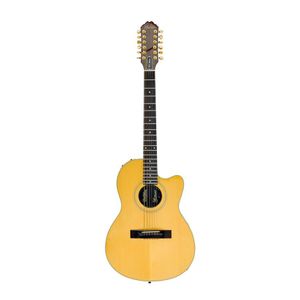National Resonator Guitar Used in "Shining Star" Video
You must be a subscriber, and be logged in to view price and dealer details.
Subscribe Now to view actual auction price for this item
When you subscribe, you have the option of setting the currency in which to display prices to $Au, $US, $NZ or Stg.
- Cone - A popular decorative motif based on the shape of the pine cone, and used in silver ceramics and furniture. Because of its shape it is most suitable for use as a finial.
- Rosewood - A dense timber that varies in shade to very light brown to almost black. When rosewood is cut and sanded the colour of the timber will turn black, and after polishing and exposure to daylight, the surface will gradually lighten over time to light brown with black streaks.
The name comes from the odour emanating from the timber when it is planed, sanded or cut.
Rosewood was very popular for use in Victorian furniture in the second half of the 19th century, and at that time most of the rosewood was imported from Brazil. However it also grows in India and Indonesia.
It is used in the sold for chairs and table legs, but for carcase furniture such as side cabinets and bookcases, and for table tops it is always used as a veneer. - Bakelite - Bakelite was the first completely synthetic man-made substance. Bakelite was invented in 1909 by an independent New York chemist Leo H. Baekeland. It was called the "material of a thousand uses" and used to make everything from car parts to jewellery.
Although nearly all plastic from this period is known as ?Bakelite', it is important to remember that this is an umbrella term that covers many different early plastics such as Lucite and cellulose acetate, and includes Bakelite.
We often think of the colour of Bakelite items as dark brown, but it was manufactured in various colours including yellow, butterscotch, red, green and brown.
Bakelite could also be transparent, or marbleised by mixing two colours. Plastics were cheap to produce and could be moulded or carved in a huge variety of ways.
Bakelite is most commonly associated with radio cases of the 1930s, telephones and kitchen utensils, but it was also used extensively in jewellery manufacture.
Early designs from the 1920s were plainer and simpler than later examples. Geometric and floral patterns typical of Art Deco styling were popular.
During its heyday in the 1930s, Bakelite jewellery was stocked by the most prestigious stores, such as Saks, Harrods and Macy?s, who dedicated a shop window display to it in 1935.
Coco Chanel featured Bakelite items in her accessories collection and the material was praised frequently in Vogue magazine.
Manufacture of some consumer Items were suspended in 1942 in order to concentrate manufacturing on the war effort.
Small items made of Bakelite are now valuable collectables. Andy Warhol was an avid collector, and when he died in 1987, his pieces sold for record prices at Sotheby's. - Mother-Of-Pearl - Mother-of-pearl, technical name "nacre", is the inner layer of a sea shell. The iridescent colours and strength of this material were widely used in the nineteenth century as an inlay in jewellery, furniture, (especially papier mache furniture) and musical instruments.
In the early 1900s it was used to make pearl buttons. Mother-of-pearl is a soft material that is easily cut or engraved.
Nowadays it is a by-product of the oyster, freshwater pearl mussel and abalone industries.
This item has been included into following indexes:
Visually similar items

An Ovation 1615 twelve-string acoustic/electric guitar, American made, serial number 168532, natural gloss finish, solid spruce top, five-ply bound, parabolic 'Lycrachord' bowl back, ebony fingerboard with ornamental diamond inlays, walnut bridge, Piezoele

A Maton EBG808C small body acoustic/electric guitar, Australian made, serial number 2181 (1003), natural satin finish, selected Queensland maple neck, 6 mm pearl dot inlays, 'AA Select' solid Sitka spruce top, select Queensland maple back and sides, scallo

A Chet Atkins SST twelve-string natural acoustic/electric guitar, 1989, American made, serial number 83429548 'Promotional not for resale' stamped to rear of headstock, twelve 'Mini Schaller' die-cast machine heads, natural gloss finish, solid spruce top,

A T.F. Morris W-50 acoustic guitar, an exact copy of the Martin D-45, the rosewood fingerboard with inlaid shell detail, mahogany and satinwood body, the head marked 'Morris 011514'; complete with hard case.
